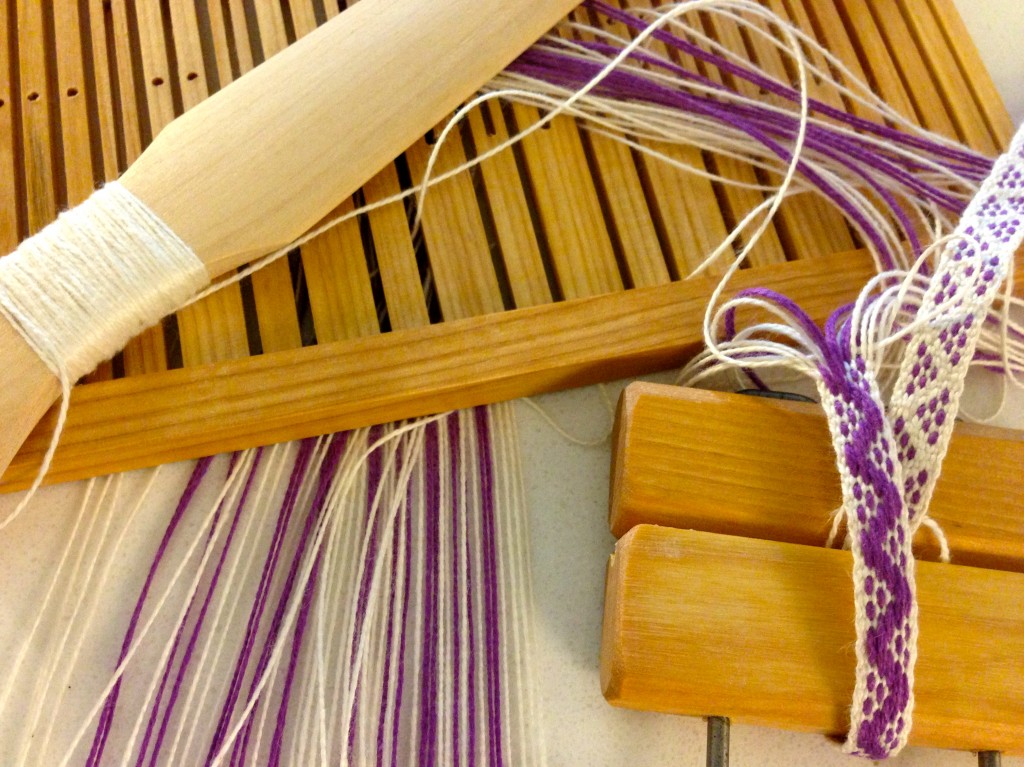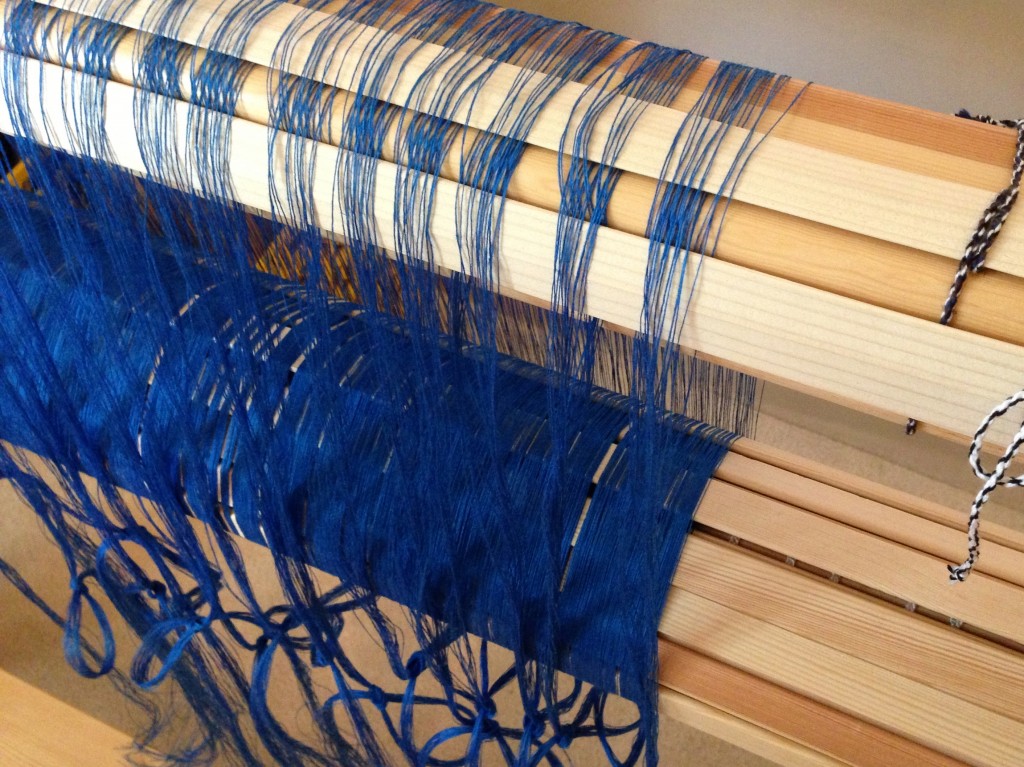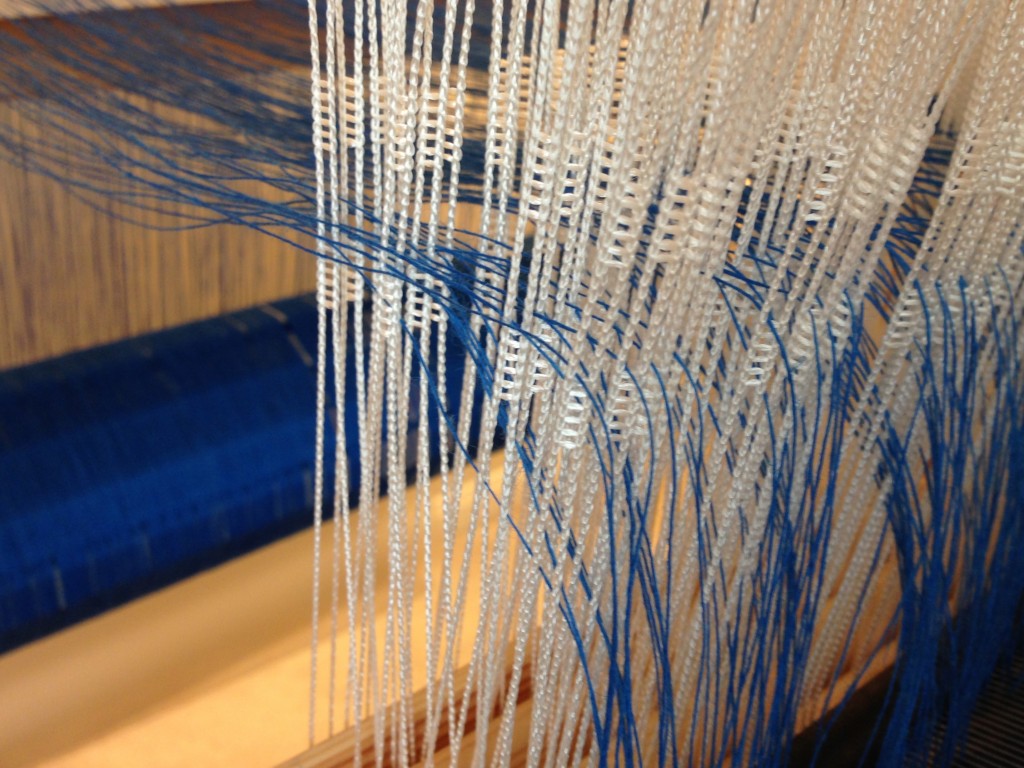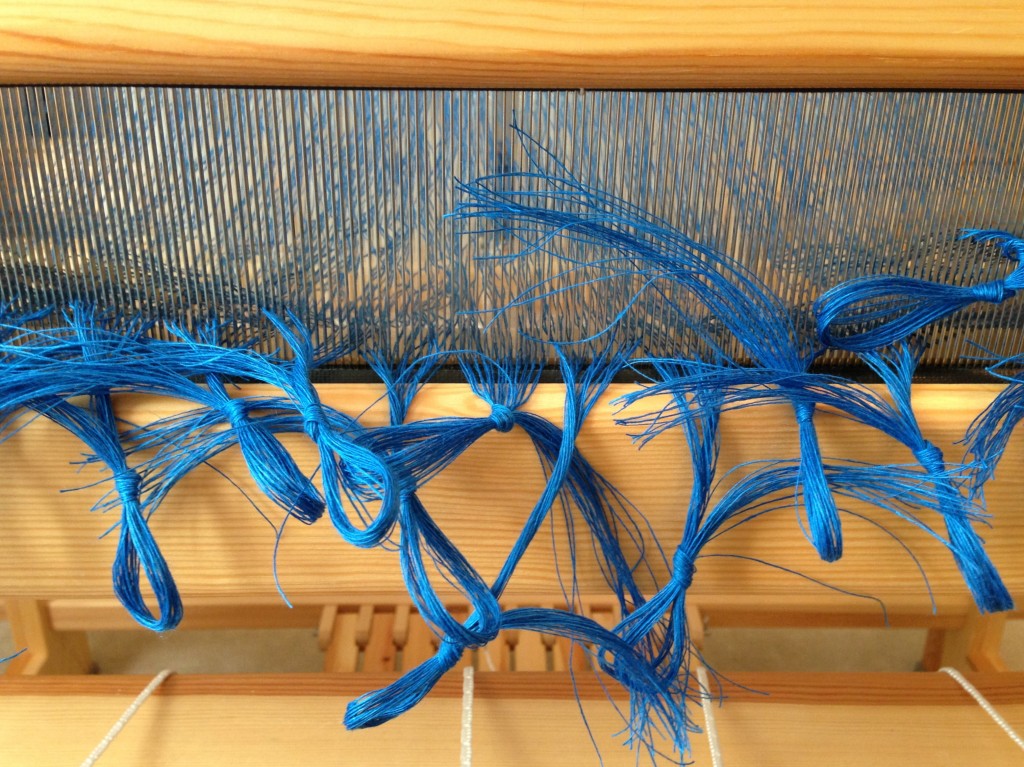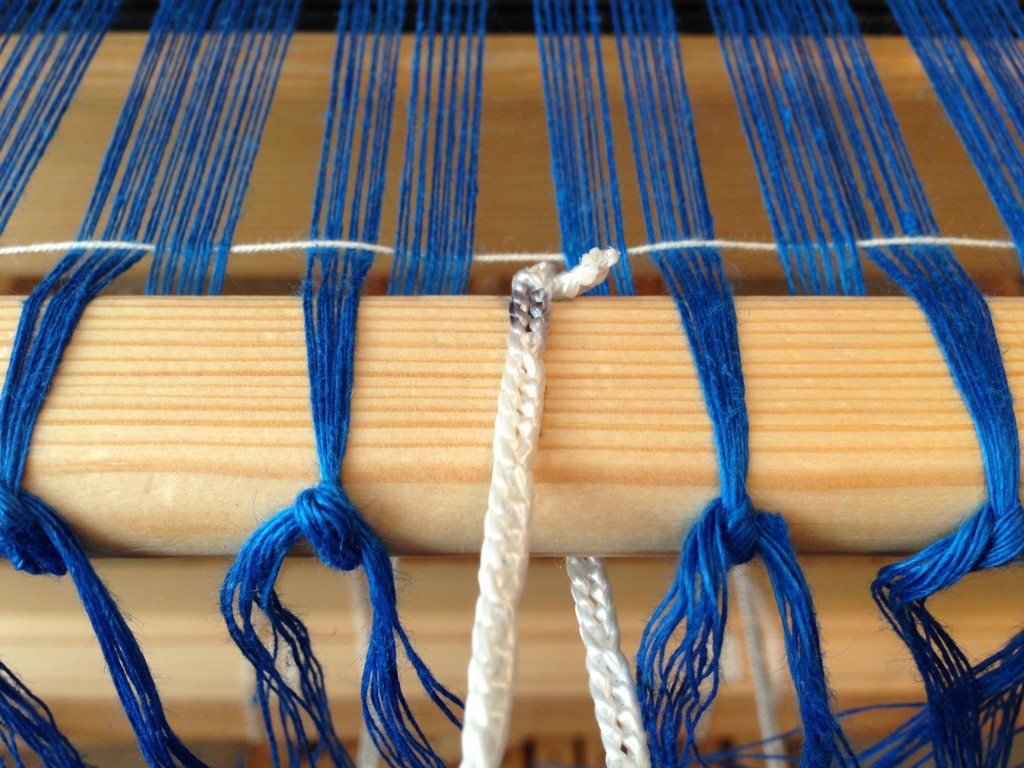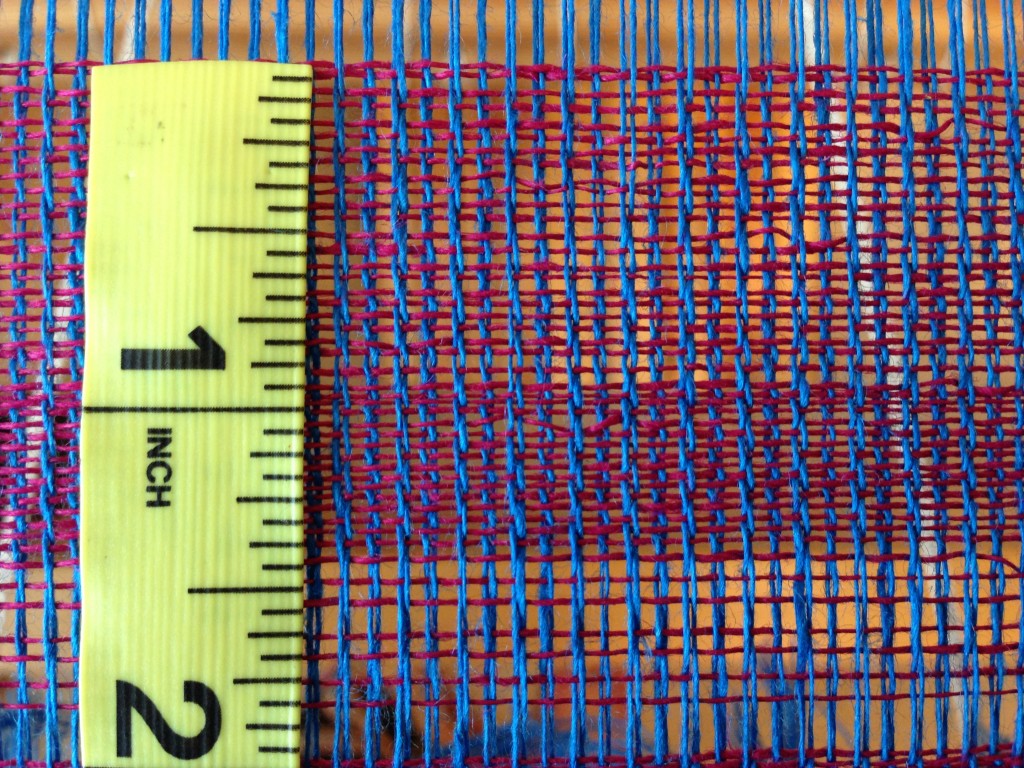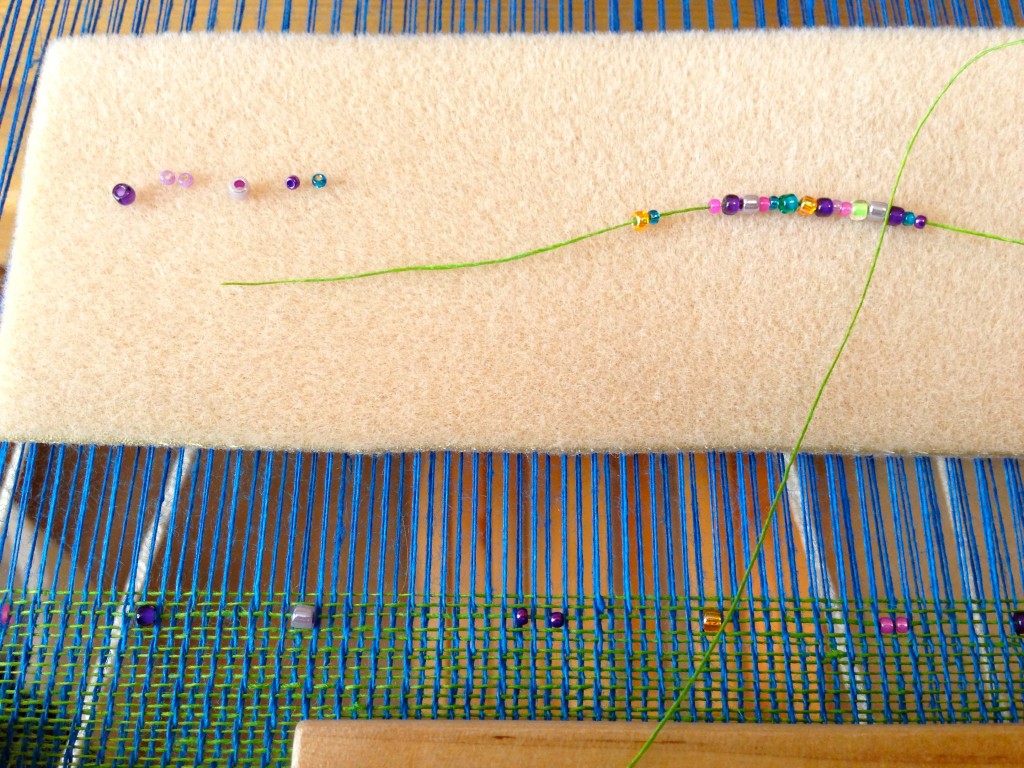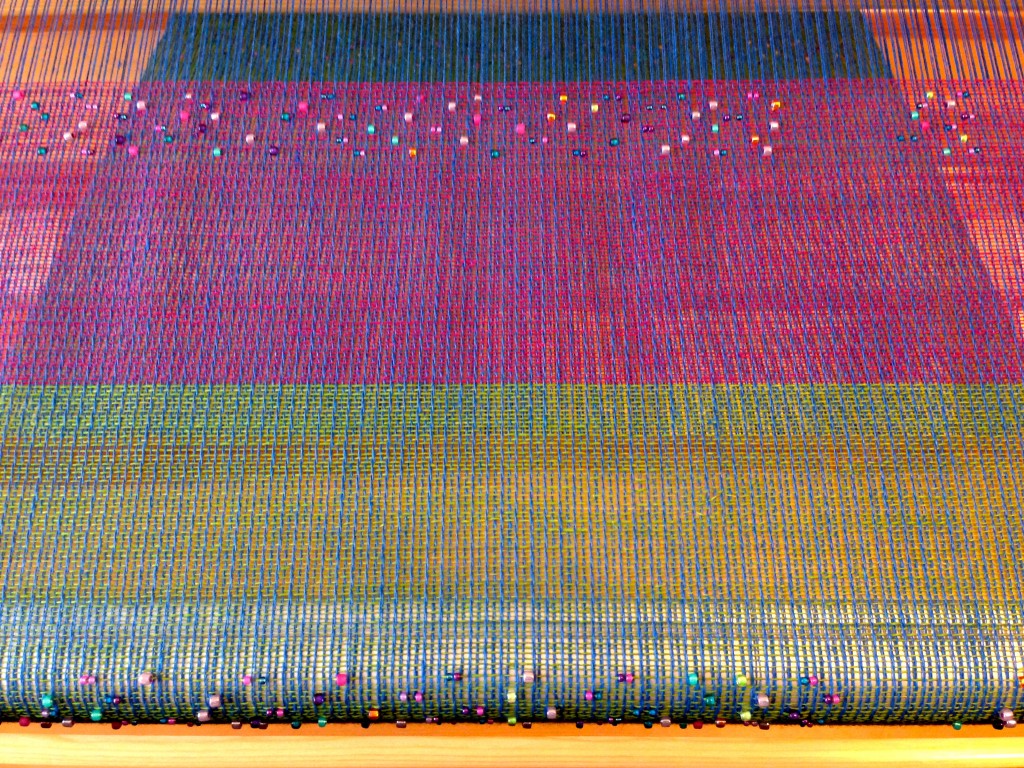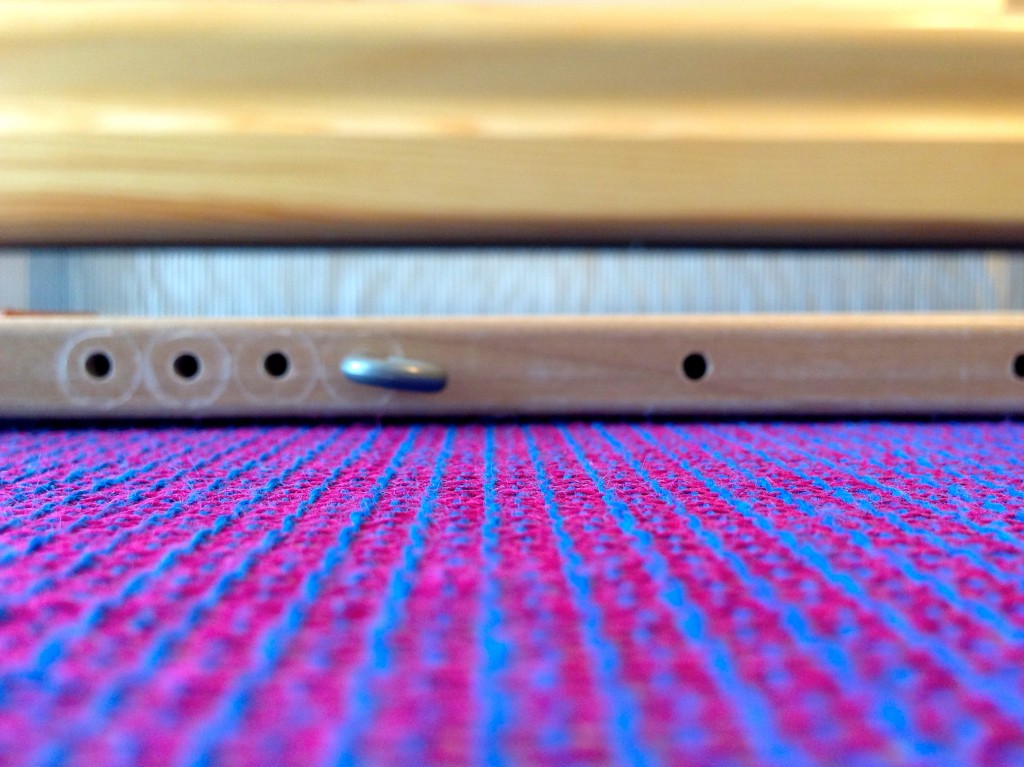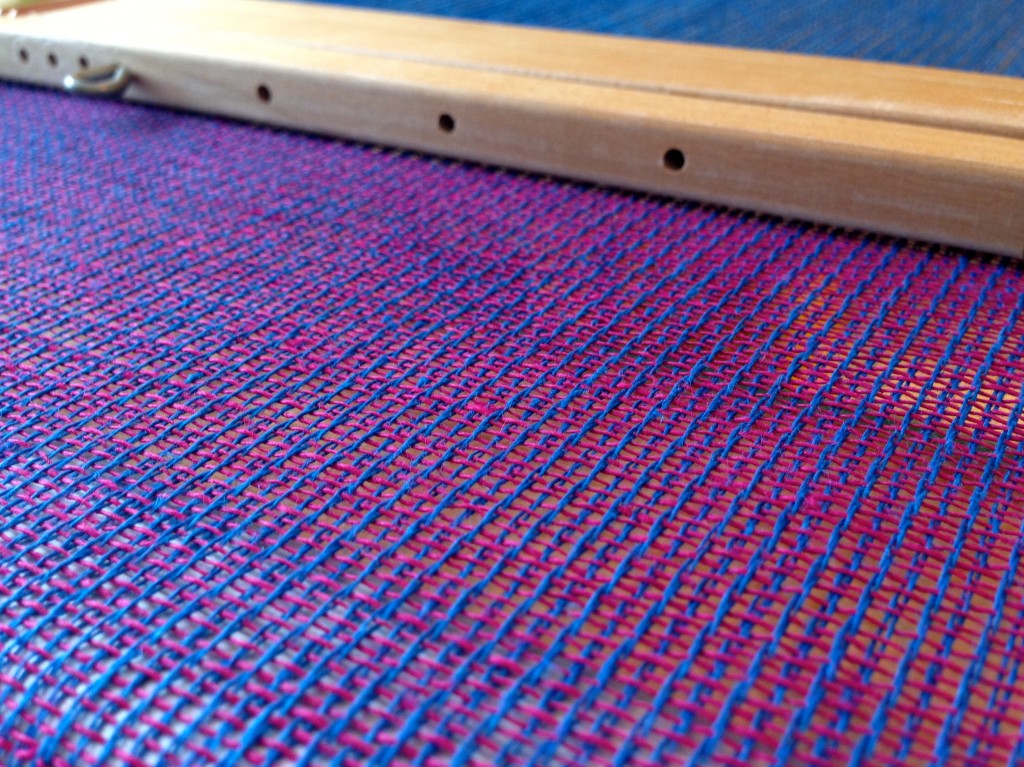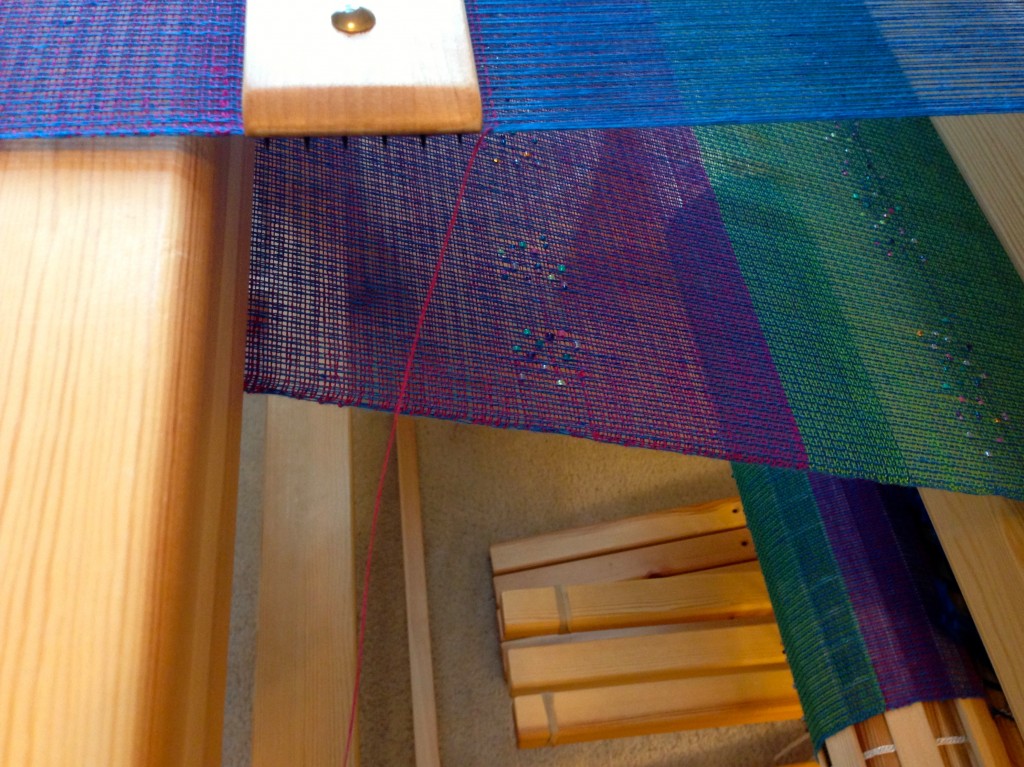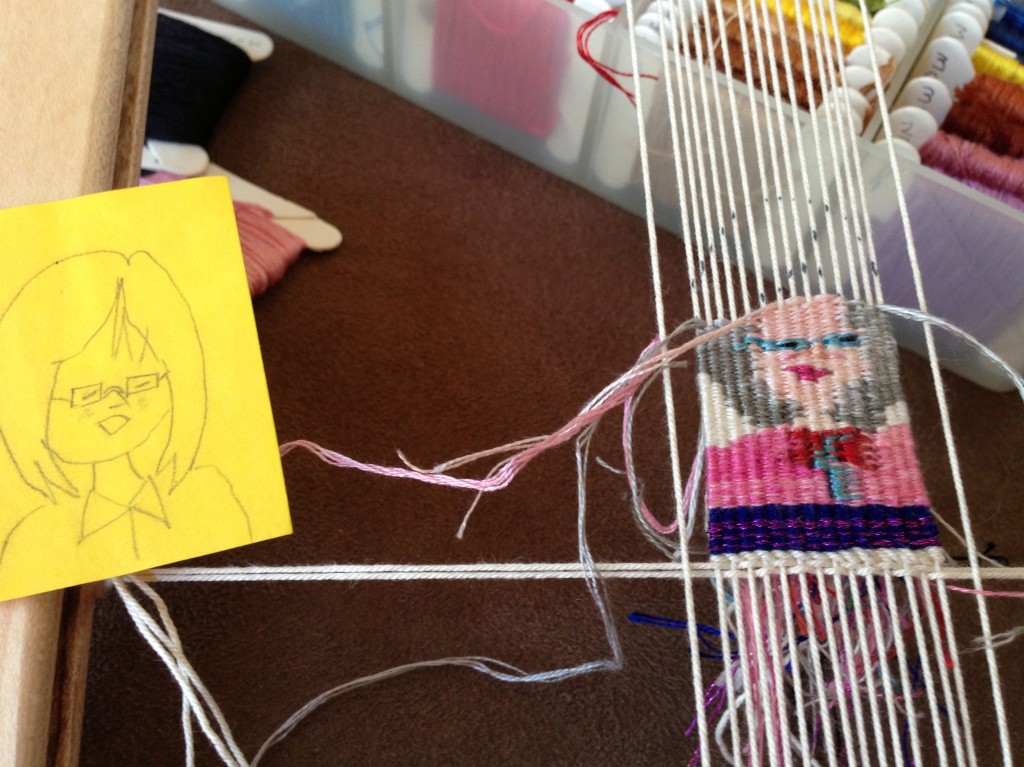Whenever I cut new cloth off the loom I am reminded of how much I have. I feel extremely fortunate to get to do what I enjoy–weave! At the same time, I know there are many people in great need. Is it possible to establish a rhythm of giving? I want to be aware of the needs around me, caring enough to make a difference.
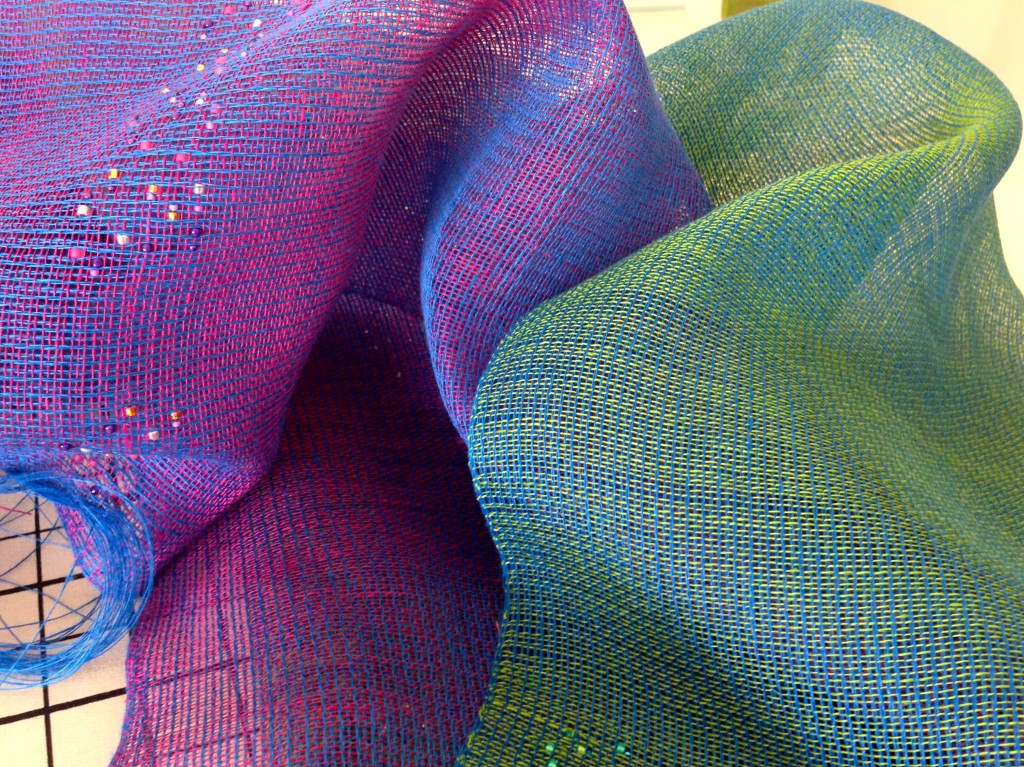
What if…, every time I come to the end of a warp, I intentionally help someone in a tangible way? Since I weave one warp after another, this could be a routine reminder to put kindness into action.
I did that today. This linen warp came to an end, and I took my cello to play for Sam, a precious elderly gentleman who doesn’t have much to look forward to in the here-and-now. I wish I could tell you I planned the visit to coincide with the weaving, but I didn’t. The warp happened to be at the end, and I had already made plans for the cello visit. But it did make me think…
What ideas do you have for establishing a rhythm of providing for others in need?
May you continually experience the joy of giving.
Love,
Karen

